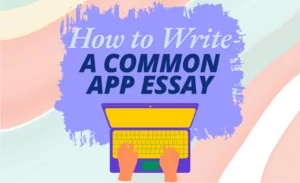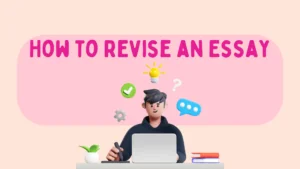It’s no surprise that when you’re building an essay, each part needs to fit together to reflect the main idea. Now, if your introduction and thesis are the corner pieces, the bridge is like that connecting piece in the middle that makes everything come together smoothly. Without a bridge, your essay might feel like it’s jumping from one idea to another without any clear direction. It keeps your readers on track, helping them follow your thoughts without getting lost. And don’t worry, it’s easier than it sounds—I’ll show you how to do it with some specific examples!

✅ AI Essay Writer ✅ AI Detector ✅ Plagchecker ✅ Paraphraser
✅ Summarizer ✅ Citation Generator
What Is a Bridge in an Essay
Let’s talk about bridges—not the ones you drive across, but the ones you need in your essays. So, what exactly is a bridge in writing? Think of it as a connecting link between your introduction and the main body of your work. It’s that sentence (or two) that helps your ideas flow smoothly from one paragraph to the next.
Bridges are usually placed right after your introduction or before you get to the next argument, idea, or point.
You’ve got your hook to grab the reader’s attention, and then you set up the background and introduce your thesis. But before diving straight into your main points, you need a bridge to ease your reader into the next part of your essay. This connecting sentence helps blend your introduction with the body paragraphs.
Why does this matter? Well, a good bridge makes your essay easier to read and understand. It provides the necessary information to connect your ideas, helping the reader stay engaged. With no bridges your essay might fall apart, leaving your reader confused.
What Makes a Good Bridge in an Essay?
So, what should a bridge sentence be like? First off, it should be clear and concise. You don’t need to go overboard—just a simple sentence or two will do the trick. The key is to create a logical connection between the background information you’ve provided in your introduction and the first point you’re about to discuss. Think of it as setting the stage for what’s coming next, without giving everything away.
Here’s a tip: try to mention something from your introduction and something from your upcoming paragraph in your bridge. This helps in linking the two sections seamlessly.
For example, if your essay is about the benefits of exercise, your bridge might reference the general health background you’ve just discussed and hint at the specific benefits you’re about to explore.
Another important detail: avoid making your bridge sentence too generic. You want it to feel natural, like a smooth transition, not like you’re just filling space. A good bridge sentence should be specific enough to add value to your essay but broad enough to cover the transition from one idea to the next. It’s a balancing act, but with a little practice, it’ll become second nature.
Humor can be your friend here, too — don’t be afraid to lighten things up with a witty comment or a clever observation if it fits the tone of your essay. Just remember, the goal is to keep your reader interested and moving forward with you.
Here are some examples of most common transitional words for essay bridges:
| Type | Transitional Words |
|---|---|
| *️⃣ Addition | Furthermore, Moreover, Additionally |
| 🔀 Contrast | However, On the other hand, Conversely |
| 🔄 Cause and Effect | Therefore, Consequently, As a result |
| ↕️ Comparison | Similarly, Likewise, In the same way |
| ↪️ Emphasis | Indeed, In fact, Above all |
Good Bridge Examples Essay
When writing an essay, having a solid bridge between your introduction and body paragraphs is like having a strong backbone. To help you nail this concept, let’s dive into a few good bridge examples and break down why they work so well. To better show off the rules, all of the bridge sentences will be highlighted.

“The rise of social media has dramatically changed how we communicate. However, while social media offers new avenues for connection, it also raises concerns about privacy and mental health. These concerns highlight the need for more thoughtful engagement with these platforms.”
🔵 This bridge smoothly shifts from the introduction, which presents the broad idea of social media’s impact, to the first paragraph, focusing on specific concerns. It connects the general background with the more focused thesis and helps the reader transition without feeling lost.

“Education systems across the globe are evolving to meet the needs of the 21st century. Despite these changes, many traditional methods still play a vital role in student success. This is particularly true for approaches that emphasize critical thinking and problem-solving.”
🔵 The bridge here acknowledges the introduction’s discussion on educational evolution while setting up the next paragraph’s focus on traditional methods. It helps in blending the broader topic with the specific points that will be elaborated on, which makes the transition feel natural.

“Climate change is arguably the most pressing issue of our time. While the effects of climate change are undeniable, the solutions we pursue will determine our future. One of the most promising solutions is the shift toward renewable energy sources.”
🔵 This bridge connects the alarming nature of climate change with the hopeful discussion of solutions. It helps keep the flow from a broad, attention-grabbing hook to a focused argument in the following paragraph.
These examples work because they do a few key things: they relate back to the thesis, introduce the upcoming paragraph’s main idea, and smoothly connect one sentence to the next.
Summing Up
Crafting a solid bridge in your essay is not just a stylistic choice—it’s a part of writing that can significantly improve the quality of your work. A well-constructed bridge keeps your argument strong and your reader engaged, which is exactly what you want in any academic essay. When your ideas are connected smoothly, it shows that you’ve thought carefully about the structure of your essay, making your argument more persuasive. So, don’t underestimate the importance of a well-placed bridge — it can elevate your writing and make your essay stand out for its coherence and effectiveness.
FAQ
Follow us on Reddit for more insights and updates.





Comments (0)
Welcome to A*Help comments!
We’re all about debate and discussion at A*Help.
We value the diverse opinions of users, so you may find points of view that you don’t agree with. And that’s cool. However, there are certain things we’re not OK with: attempts to manipulate our data in any way, for example, or the posting of discriminative, offensive, hateful, or disparaging material.